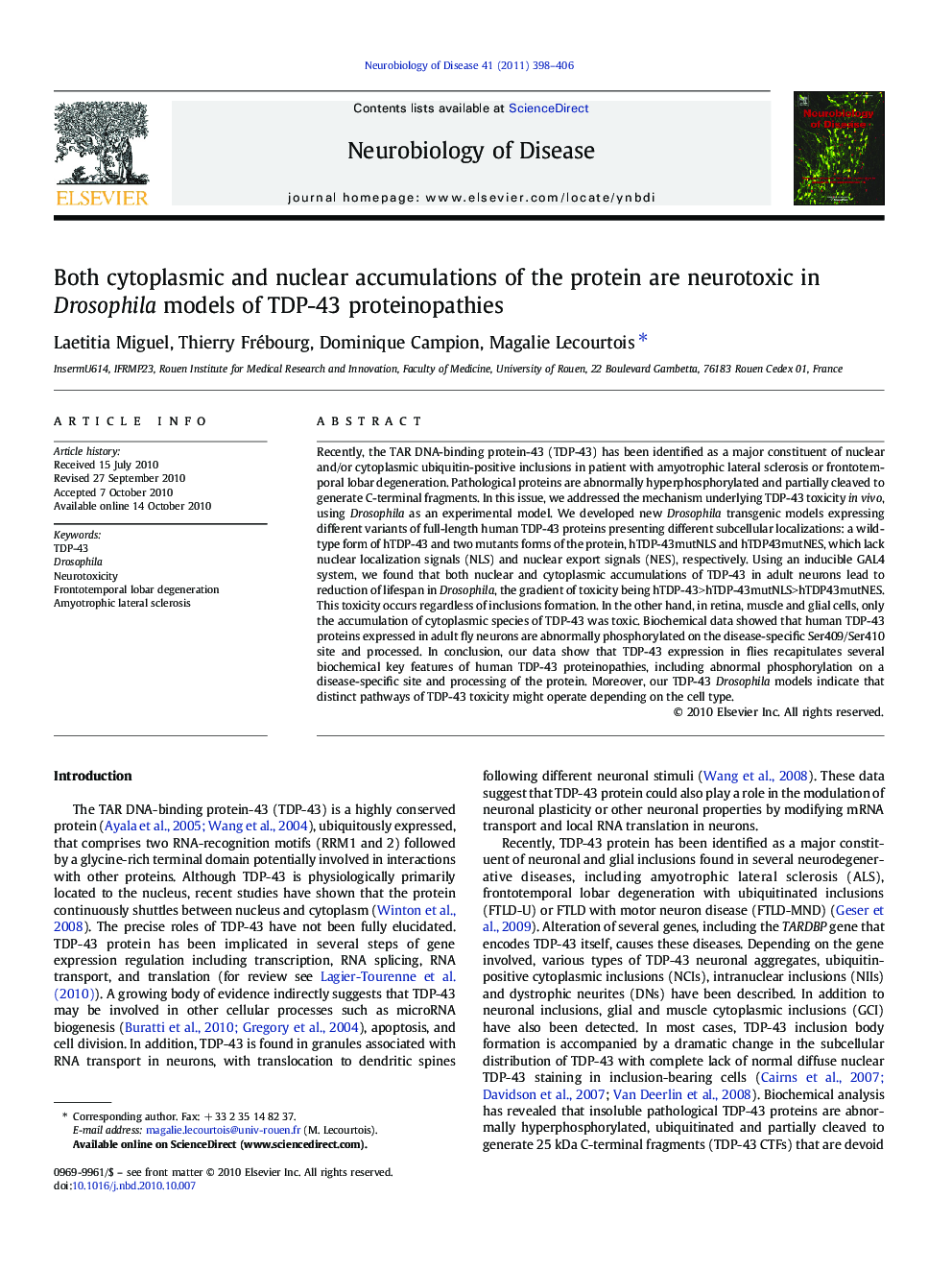| کد مقاله | کد نشریه | سال انتشار | مقاله انگلیسی | نسخه تمام متن |
|---|---|---|---|---|
| 3069602 | 1580698 | 2011 | 9 صفحه PDF | دانلود رایگان |

Recently, the TAR DNA-binding protein-43 (TDP-43) has been identified as a major constituent of nuclear and/or cytoplasmic ubiquitin-positive inclusions in patient with amyotrophic lateral sclerosis or frontotemporal lobar degeneration. Pathological proteins are abnormally hyperphosphorylated and partially cleaved to generate C-terminal fragments. In this issue, we addressed the mechanism underlying TDP-43 toxicity in vivo, using Drosophila as an experimental model. We developed new Drosophila transgenic models expressing different variants of full-length human TDP-43 proteins presenting different subcellular localizations: a wild-type form of hTDP-43 and two mutants forms of the protein, hTDP-43mutNLS and hTDP43mutNES, which lack nuclear localization signals (NLS) and nuclear export signals (NES), respectively. Using an inducible GAL4 system, we found that both nuclear and cytoplasmic accumulations of TDP-43 in adult neurons lead to reduction of lifespan in Drosophila, the gradient of toxicity being hTDP-43>hTDP-43mutNLS>hTDP43mutNES. This toxicity occurs regardless of inclusions formation. In the other hand, in retina, muscle and glial cells, only the accumulation of cytoplasmic species of TDP-43 was toxic. Biochemical data showed that human TDP-43 proteins expressed in adult fly neurons are abnormally phosphorylated on the disease-specific Ser409/Ser410 site and processed. In conclusion, our data show that TDP-43 expression in flies recapitulates several biochemical key features of human TDP-43 proteinopathies, including abnormal phosphorylation on a disease-specific site and processing of the protein. Moreover, our TDP-43 Drosophila models indicate that distinct pathways of TDP-43 toxicity might operate depending on the cell type.
Research Highlights
► TDP-43 expression in flies recapitulates key biochemical features of human disease.
► Both nuclear and cytoplasmic accumulations of TDP-43 are neurotoxic in adult flies.
► Toxicity results irrespective of inclusions formation.
Journal: Neurobiology of Disease - Volume 41, Issue 2, February 2011, Pages 398–406